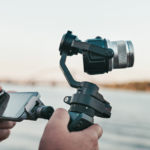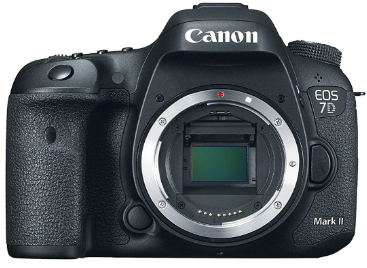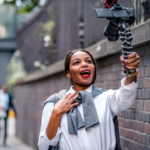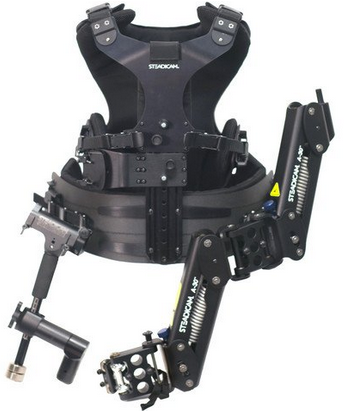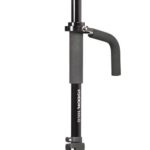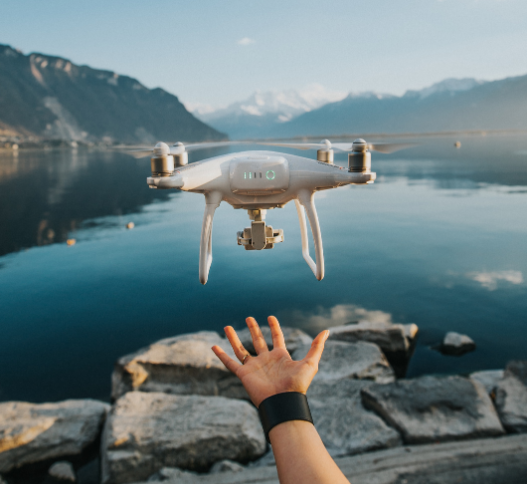
If you are trying out photography and/or videography, you might ask: what is a drone gimbal and how does it work? You’ve probably seen photographers and videographers for events use drones – but how do they keep the footage stable while up in the air? That’s because the drones have a gimbal.
A drone gimbal is typically a 3-axis flying object that you can control using your phone or a remote control device. Its job is to shoot footage or take photos without or with minimum amounts of blur or instability due to its gimbal feature.
Without a gimbal to help stabilize the drone, your aerial footage won’t be as smooth and as steady as possible. Considering that drones float in the air, they can get unstable sometimes due to wind currents and other outside factors, which is why a gumball is important.
What is a gimbal and how does it work?
Gimbals are found on different types of camera stabilizers with a 3-axis mechanism that controls the pan, tilt, and roll of the camera, therefore stabilizing each shot or footage. When it comes to drones, they help stabilize the flight so that the footage doesn’t get shaky.
A gimbal can be attached to any camera or shooting equipment (even a GoPro or a mobile phone). There are many types of gimbals out there – some are meant for hobby photography, for vlogging, and others are for serious photographers. Some gimbals can even carry the extra weight of lenses.
However, some people use gimbals to stabilize shots from way up in the air. In the case of aerial photography, they are mounted onto drones and are usually sold as a whole package (a combination of a drone, camera, and gimbal in one).
One example that we’d like to suggest is the Drone X Pro LIMITLESS Camera Drone, which has a 3-axis gimbal and can capture any footage in 4K HD – great for photography, videography, and even live streaming or vlogging.
Made with a set of lithium-ion batteries, this 1.2-pound drone gimbal can be controlled using Wi-Fi and it also has automatic obstacle avoidance. It has a flight range of up to 4,000 feet and it has a return-to-home button for convenience when the drone is low on battery.
Yet another considerable choice is the LARVENDER Drone with a Camera, which can fly up to 3,937 feet in the air. With up to 50 minutes (2 batteries) of estimated flight time, this 3-axis gimbal drone also has an obstacle avoidance feature for convenient and uninterrupted flight and aerial photography.
Able to record up to 4K HD, it also has an automatic returning function when the battery is low. Weighing 1.3 pounds, it’s not too heavy to maneuver. This drone gimbal and camera combo have an estimated charging time of about 90 minutes.
If you do want a drone gimbal, we suggest going for a unit that’s capable of recording in 4K HD to make the most out of its flight. Most of the time, the goal of aerial photography is to capture large sceneries so you’ll want a drone camera with a gimbal that’s not only stable but also high in resolution.
Contents
What is DJI drone gimbal?
The DJI Air 2S Drone Quadcopter is a drone gimbal that’s well-renowned by most professional photographers and videographers who want a quality aerial shot. DJI is one of the most renowned brands of drones or quadcopters – especially when it comes to photography and camera stabilizers.
What makes it a sought-after drone gimbal from the rest of the competition is that it’s more than just a 3-axis gimbal drone camera – it’s also capable of shooting up to 5.4K video for those who need high-quality cinematic resolutions for their footage.
So far, this drone gimbal has one of the highest maximum flight distances of up to 7.5 miles and a maximum ceiling of 16,404 feet, although we still recommend asking your localities about drone flight restrictions on certain heights.
Do you need a gimbal on a drone?
Yes, a gimbal on a drone is very helpful because, in the air, you never know what kind of distraction can blow your camera away. To get the most out of your aerial camera on a drone, there should be a 3-axis gimbal to support its stability.
There are also many models in the market for drone gimbals, such as the Bwine F7 Camera Drone, which is a budget-friendly choice. With up to level 6 wind resistance, this 3-axis drone gimbal can also shoot in 4K and has up to 75 minutes of flight time using its 3 batteries.
Another plus factor we like about this drone gimbal is the use of a brushless motor, which not only minimizes noise (important for getting quiet footage) but also maintains a smooth movement for the camera when you fly it up in the air. This drone gimbal camera combo can fly up to 32 feet.
What camera does DJI use?
Different cameras are used for a variety of DJI camera drone models. If we’re going to look into the DJI Air 2S that we mentioned above, it uses a 20-megapixel camera with a 1-inch-type CMOS sensor. This camera can be controlled using the mobile app.
On the other hand, if you want a higher-quality camera, the 48-megapixel camera of the DJI Mavic Air 2 might be for you – especially for high-quality details. The type of camera on a DJI drone gimbal will vary per model – it’s best to look into its specifications first before buying.
Keep in mind, however, that when the camera’s megapixels go up, it also means a higher price. If you’re on the budget side, we recommend starting with the Air 2S and if you need extra details, you can go for the Mavic Air 2 instead.
Conclusion
To wrap it up, drone gimbal cameras are very useful for getting the ideal aerial shot – whether it’s for a wedding client or displaying the community fireworks on a live stream. Capturing these precious moments should be done with a stable drone that comes with a 3-axis gimbal so you can see the details.




